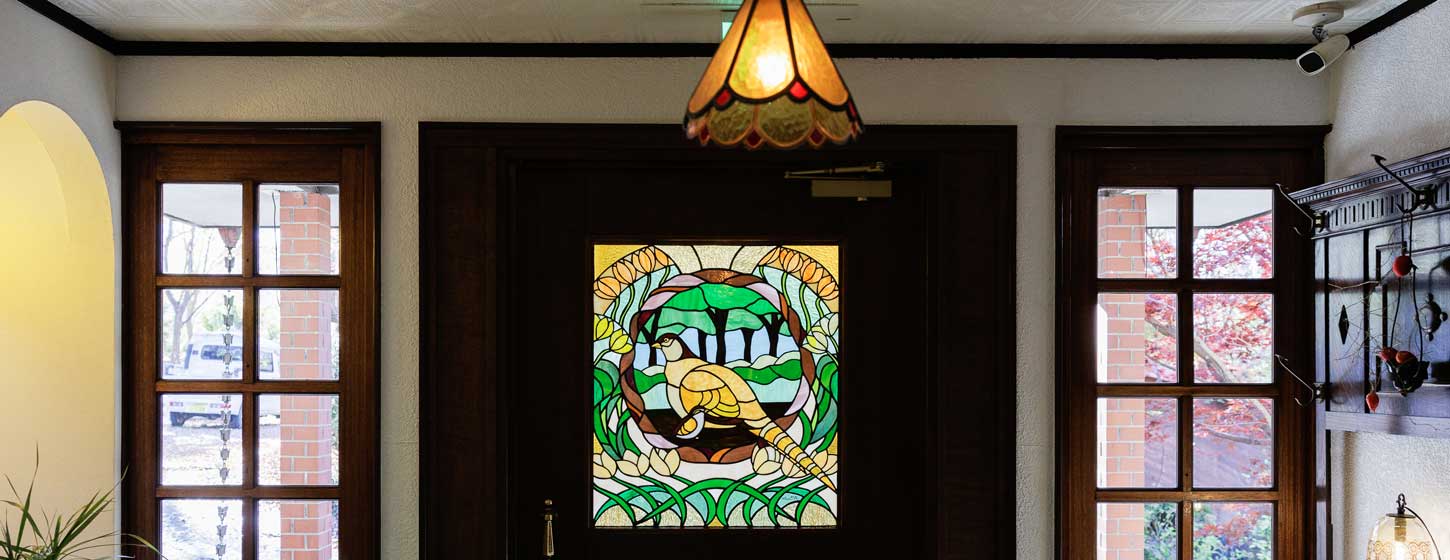C’est la vie Comfort
The only ones that dwell here.
プランに合わせて豊富なオプションをご用意しています。ご要望がございましたらお気軽にご相談ください。
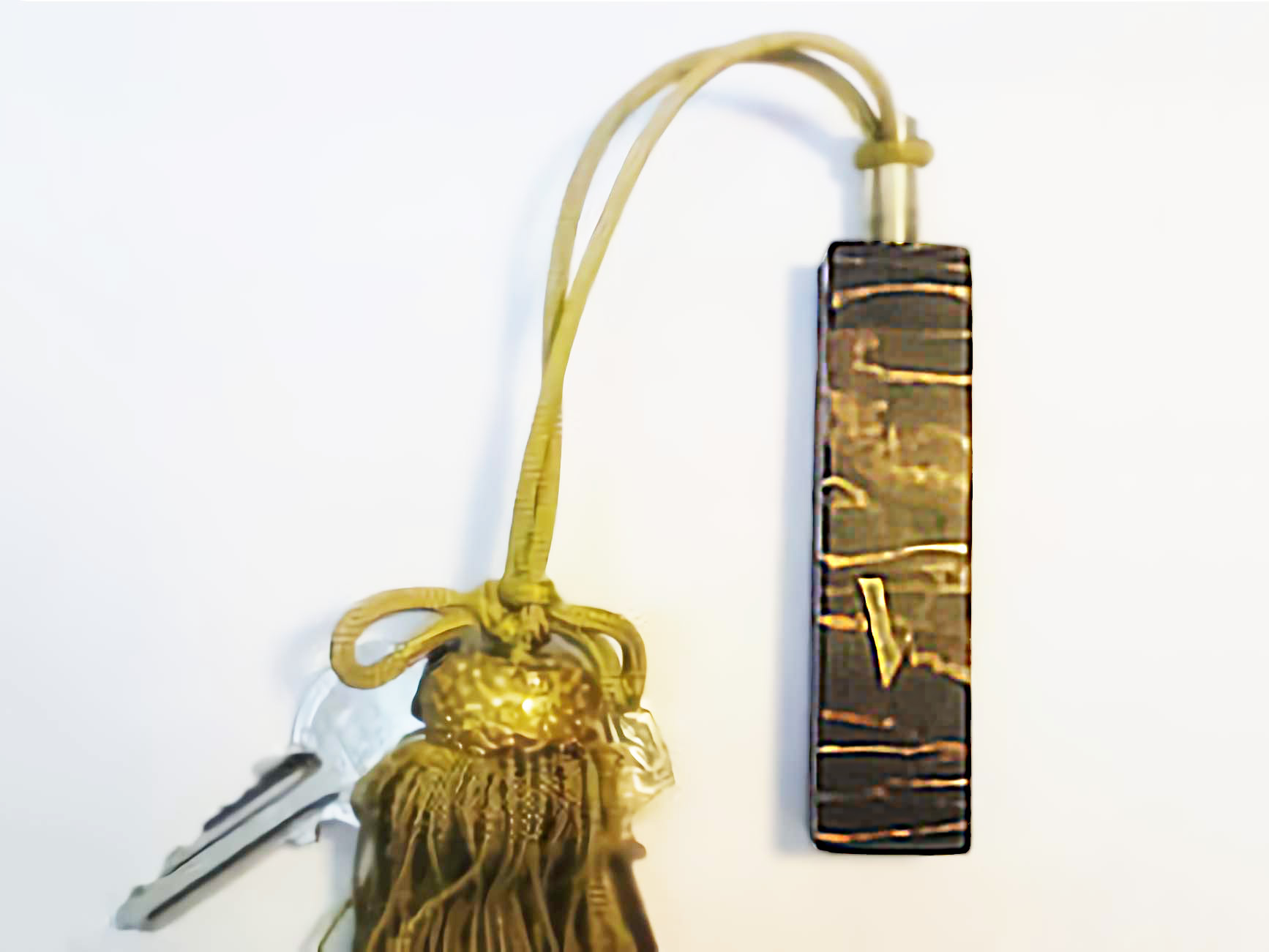
Room Key
The room number is in gold maki-e on a lacquered surface.This is really an excellent bird call.Please enjoy talking with birds in C’est la vie, where there are many wild birds.
Works by lacquer artist Fujio Yamamoto.Yamamoto’s work is also used in the lacquered tableware.
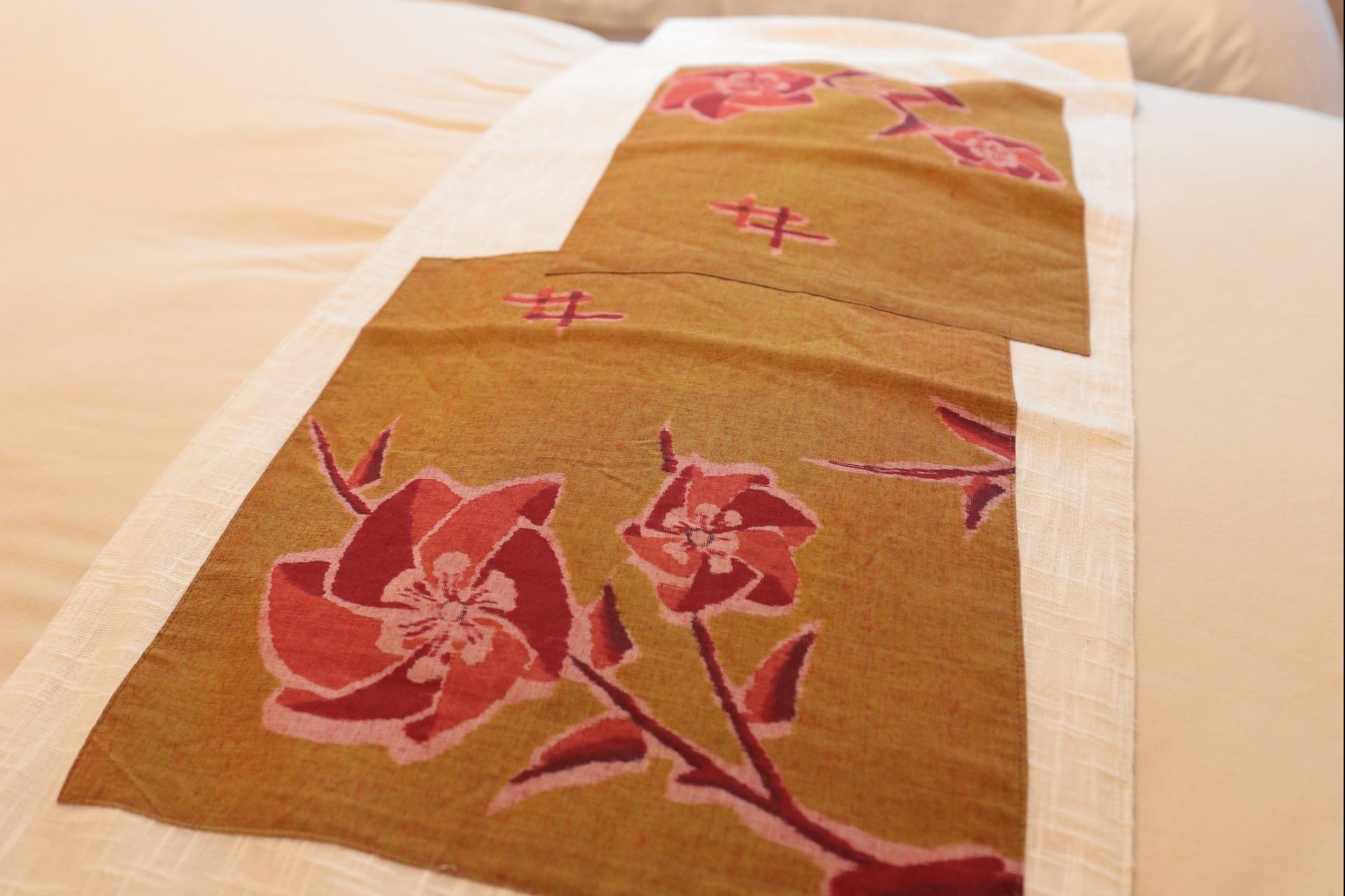
Old Chichibu Meisen Cloth
Chichibu Meisen is a textile with a unique loosely woven pattern that originated in the Chichibu region of Japan.It is characterized by its plain weave and no reverse side, which has the advantage that even if the front side fades, it can be re-tailored using the reverse side, and was popular nationwide from the late Meiji period to the early Showa period as easy fashionable clothing among women.
These precious old cloths, few in number, are still fresh and innovative in their patterns.Used as bed throws and tea utensil covers in each room
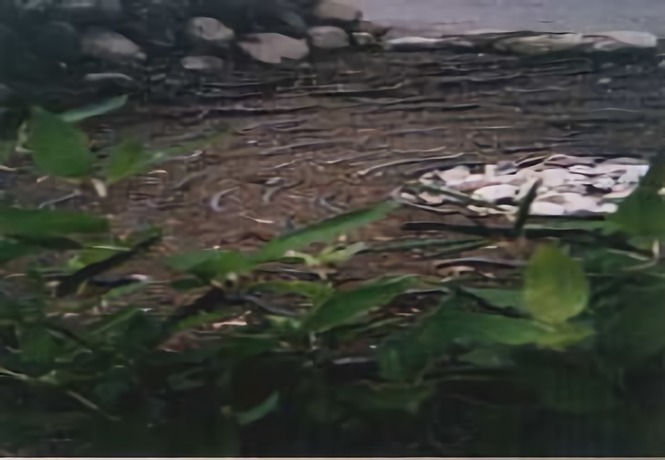
Shuijin Grotto
Suikinkutsu is a unique Japanese acoustic device that uses water overflowing from a stone washbasin or a water pot at the edge of a Japanese garden.They are called suikinkutsu because the drops of water that fall to the surface at the bottom of an upside-down jar resonate inside the jar, producing a tone similar to that of a koto (a Japanese harp).This suikinkutsu is handmade by the manager and staff of C’est la vie, and the work of digging a hole for the nearly one-meter jar was also very difficult.The drainage and, most importantly, the size of the hole at the bottom of the jar were critical.With the help of a friend of a friend, a suikinkutsu maker, we managed to make it.
Even now, 25 years after its creation, it still produces a fantastic tone.
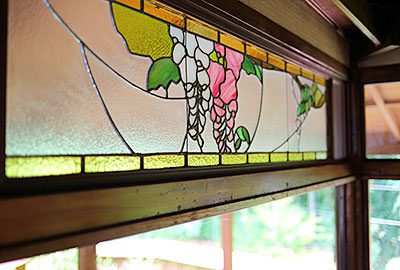
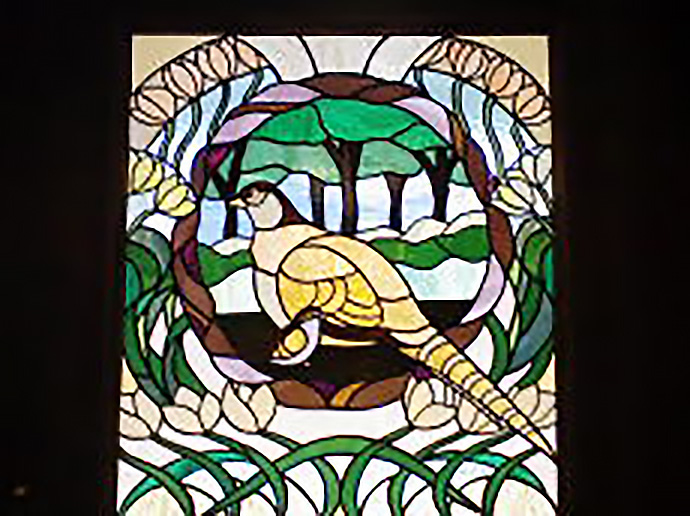
Stained Glass
【Works by Habuchi koushu I】
The skylight stained glass “Wisteria Flower” in the restaurant is an early Japanese work from a century ago.
It was housed in the reception room of the Manno Residence, a Japanese-Western-style house in Ashiya.
【Works by Motoyoshi Otsuka】
Pheasant stained glass windows at the entrance door and the first floor corridor.A mother and her child pheasant gently welcome you at the entrance.
Kaleidoscope of kaleidoscopic stained glass in the family bath and in the room.
【Works by Sadaichi Usui】
Stained glass above the first floor aisle
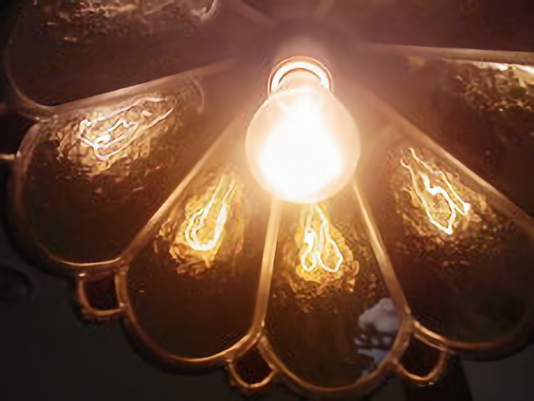
Edison bulb
Each light bulb is handmade, faithfully restored to the original light bulb invented by Thomas Alva Edison on October 21, 1879.It has been used since the establishment of C’est la vie.The light is warm, simple and serious bulb.(This is the bulb mounted in just one spot, in front of the front.)
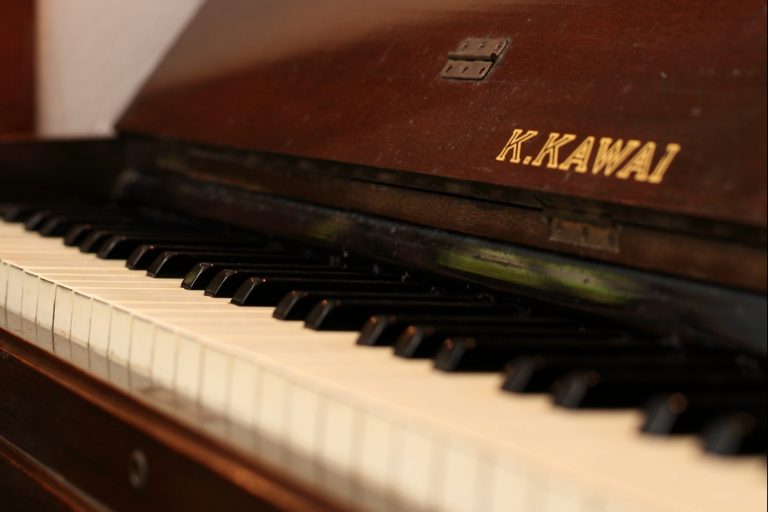
Antique Piano
Piano manufacturing was in a difficult period.About 60 years ago, the war had scattered the company’s employees and left it short of machinery, supplies, and equipment to manufacture pianos.In 1948, after overcoming many difficulties, Kawai finally resumed piano and organ production.This is a small Kawai piano that was produced at that time.
This piano, which has now become an old piano, is still in use.It has a delicacy and originality that cannot be found in today’s pianos.This piano is the same model as the one in the Kawai Historical Archive.
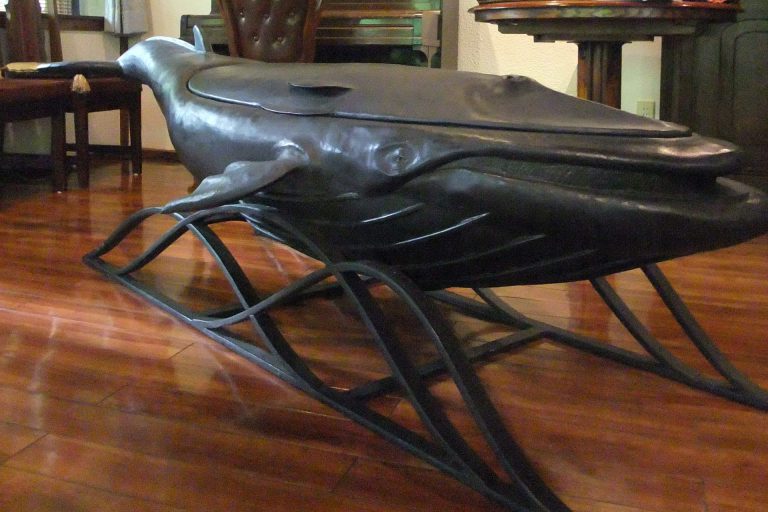
Whale Bathtub
Works by Mitsuo Nishida, a wrought iron craftsman.
Mr. Nishida’s works can be found throughout C’est la vie.Originally a bathtub, it is filled with ice to chill beer, wine, and sake during parties.
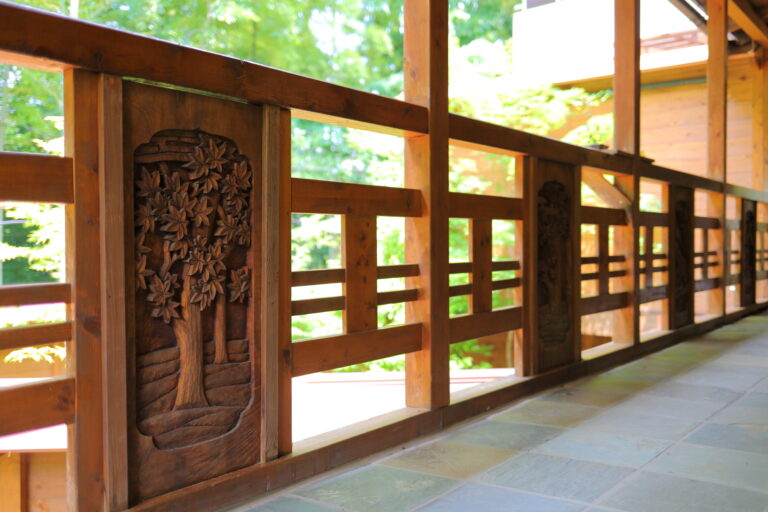
Sculpture
Works by Yutaka Toyoda.
There are many, including ten camphor tree carvings depicting the four seasons of Nagatoro that can be seen from the restaurant, and a half-moon tray carved out of horse chestnut wood at dinner.
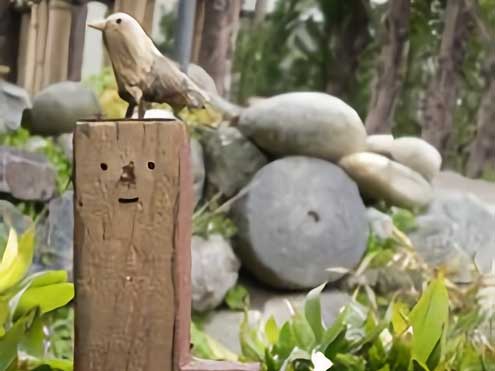
Driftwood
Works by Manabu Kamioka
Several works are moving around each room.
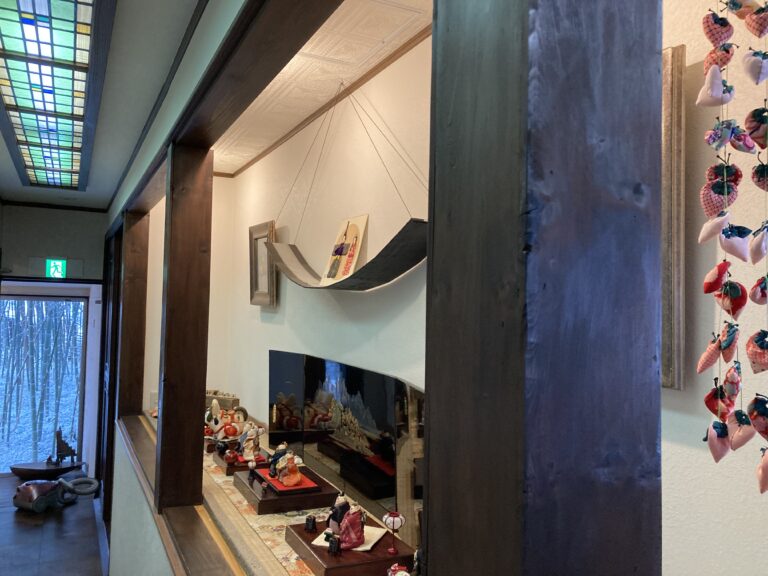
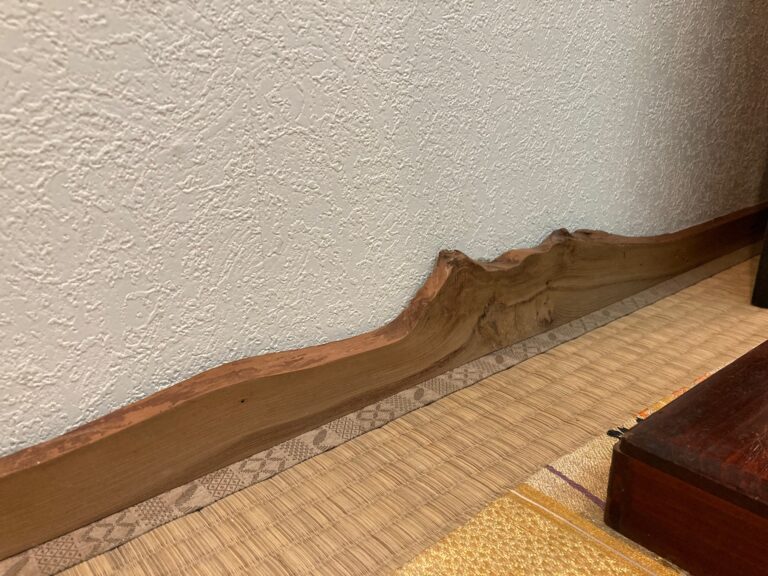
Sacred tree of Mitsumine Shrine
We were fortunate enough to come here.After completing its original work, the sacred tree was divided into dozens of pieces, and only one of these pieces of wood was honored to find its way to C’est la vie.The single piece was divided into 12 pieces and wrapped around three pillars of an existing display cabinet.The few remaining pieces of wood were also placed on the shelf.
Ki amulets containing this sacred tree are distributed at Mitsumine Shrine and are said to be a talisman of courage, energy, and motivation.
It is said that the strong and severe ki of Mitsumine Shrine is suitable for business owners, self-employed people, and people who work with their personal talents and strong will.When you come to our hotel, please feel the pillar of the ornamental shelf.


